Will Content Velocity Now Affect Your Website’s SEO?
Content seems to be the theme of every other marketing discussion these days and for all the right reasons.
With the advent of ChatGPT, even businesses that did not have a strong strategy or enough resources to implement a content strategy have been empowered. While most of us are still on the fence about content and artificial intelligence, we are sure about one thing — more content is always a good idea for SEO.
However, as you consistently post content on your website and other platforms, it is important to understand an important metric — content velocity.
What is it, and how does it impact SEO? We explore answers to these questions and more in this article. Keep reading!
What is Content Velocity?
Content velocity refers to the amount of content you release over a defined period of time.
For example, say you release 8 blogs on your website every month. Then your content velocity in a month is 8.
You will want to measure content velocity over different periods to get a clearer picture of how often you release content, and how effective that frequency is for your website. It is also a good idea to keep a check on your competitors’ content velocity while creating or tweaking your content marketing strategy.
This means you will measure the amount of content you put out within a period versus the amount of content your competitors put out within that time frame.
Why is Content Velocity So Important?
So, why exactly are we talking about content velocity and how is it important for your content marketing strategy? To seek the right answers to these questions, you should know some of the primary advantages it offers.
- To Justify The Need for More Resources
As your website grows in scale, so will your content requirements. At some point, you will need more resources so that you can cater to the growing demand for content. Your content velocity is one of the perfect SEO metrics to consider when you want to make a case for more resources. This can especially be effective if you want to highlight that your content velocity is much lower than that of your competitors.
Your content velocity can be the perfect addition to your resource planning strategy, and convince people on the executive and management level that you need more resources. Regardless of whether you want to catch up to your competitors’ content marketing performance or overtake them, measuring the content velocity is a solid start.
- Estimating Cost of Content
Your content velocity is pivotal from the strategic point of view, considering it can tell you just how much your content costs. Using content velocity, you can also estimate how much money is being spent by your competitors as well as the cost you are likely to incur internally.
When you are designing a content program for your business, content velocity is one of the factors that you should consider in the process. This data-driven approach will give you a clearer picture of the costs that you are likely to incur in running this content program, and the changes you would need to make so that it can fit into your budget.
- Analysing Competitors’ Content Efforts
For a business to survive in a competitive market, keeping an eye on competitors is as crucial as empowering its own strategy. So, while you may be using content velocity to make a case for hiring more resources internally, you may also use the metric to keep an eye on how your competitor is doing in terms of resources.
You will be able to get a better understanding of the number of people who are working within the content program of your competitor. It is a data-driven approach to determine the number of resources that your competitors have deployed to manage their content production – whether they are freelancers, full-time, or a mix of both.
- Boosting Brand Authority
More content equals to more traffic — you may have already heard or known this. But more high-quality content also equals to increase in your brand authority. The more useful content you post, the more likelihood that users will seek out your website for relevant information, and the more boost your authority as a brand gets. For this reason, calculating your content velocity is important, and so is tracking the frequency at which you post content.
How Content Velocity Can Affect Your Website’s SEO
Now that you know the primary benefits that you can expect from calculating content velocity for SEO and integrating it into your strategies, it is good to have a better understanding of its implications on your SEO performance.
Search engines have always put a lot of emphasis on updating older high-quality content on your website as much as publishing fresh content. Having a balance of both these actions ensures that your content performs well on search engines, and brings more traffic to your website.
However, as we progress towards a more content-centric future in digital marketing, the importance of updating old content continues to reduce. Older content pieces are unable to attract relevant audiences and engage them as much as newer content. Subsequently, gaining traffic from older content has become that much more difficult.
A big reason for this is also that search engines have been evolving and tend to prioritise content that is frequently updated as it boosts user engagement. By tracking content velocity, you will be able to assess how frequently your potential audience can access and engage with your content.
You can consider these aspects, and think about the kind of influence content velocity for SEO will have on your strategy and search engine rankings. Measuring content velocity can also help you set measurable goals and track the progress of your content strategy or SEO strategy.
To sum up, there are four primary areas through which your content velocity can impact your SEO performance —
- Search Engine Rankings
- Online Visibility
- User Engagement
- Brand Authority
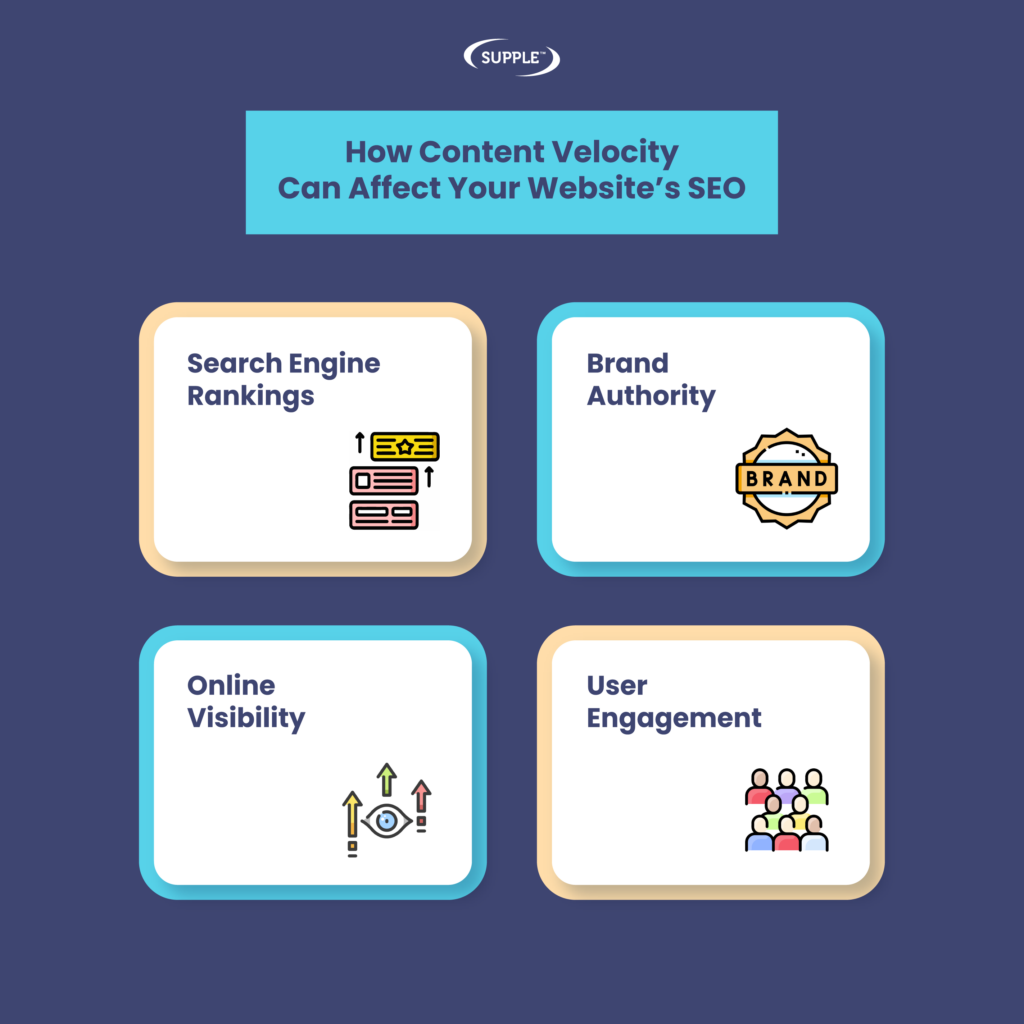
As you may already know, all four of these parameters can impact your SEO performance and the outcome of your SEO efforts. This makes content velocity a key influencer in determining your SEO performance.
How to Calculate Content Velocity Effectively?
With these many advantages associated with content velocity, you must surely be wondering how you can calculate it to improve your online marketing strategies. While the metric is quite straightforward, the process of calculating it can get complex if you do not have information on the necessary parameters.
Broadly speaking, the simplest way of calculating your content velocity is to divide the volume of your newly written content by the length of time. This content includes different formats such as podcasts, videos, social media posts, PPC, blogs and more.
Say, your office fitout business based in Adelaide has a fully functional Magento website to engage your target audience. If you publish 10 posts on office fitout solutions and interior designing services on your website every month, your content velocity can be calculated as 10 posts per month.
Using SEMrush and Screaming Frog
If you want to simplify the process, you can calculate your content velocity with the help of popular SEO tools such as SEMrush and Screaming Frog. In this regard, all you have to do is maintain a database of blogs or content published on your website within a specific timeframe.

You can then use the URL filter function in SEMrush to filter the key pages and export the final list.
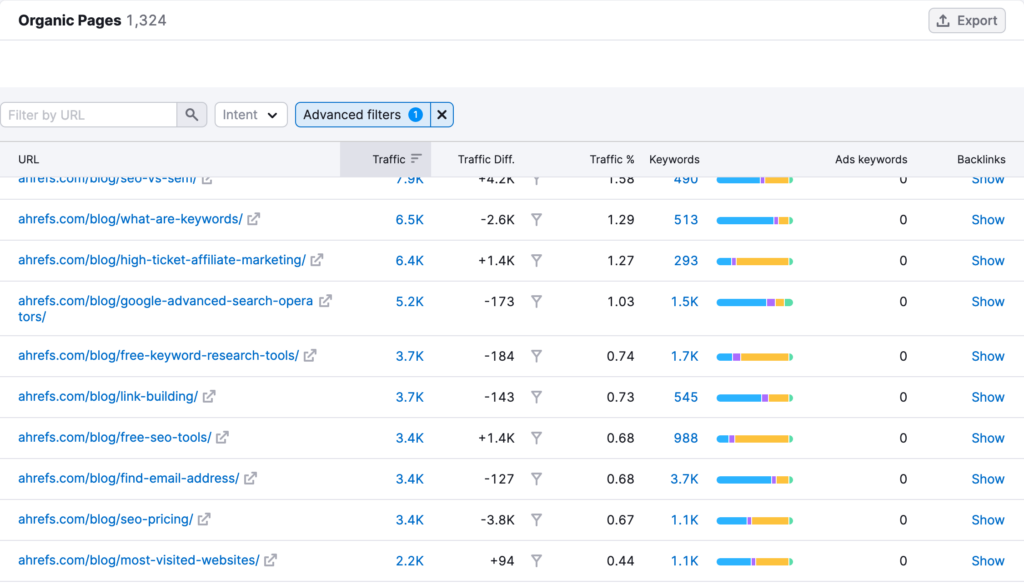
You will then need to conduct a custom extraction by putting these URLs into Screaming Frog and finding the publishing date for each of them.
As seen in the images above, we calculated the content velocity of Ahrefs using SEMrush and Screaming Frog to demonstrate the process of going about it. Once you have exported the list of articles as shown in the above list, you can analyse it using Screaming Frog.
You will need to set up a Custom Extraction by clicking on Configuration > Custom > Custom Extraction.
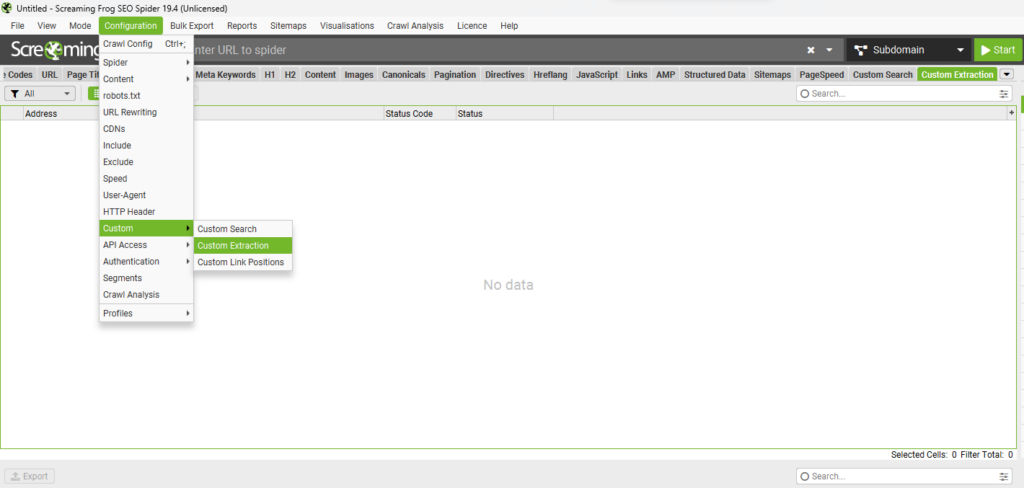
You will then need to set up your extraction configurators by adding all your data and extracting data through XPath.
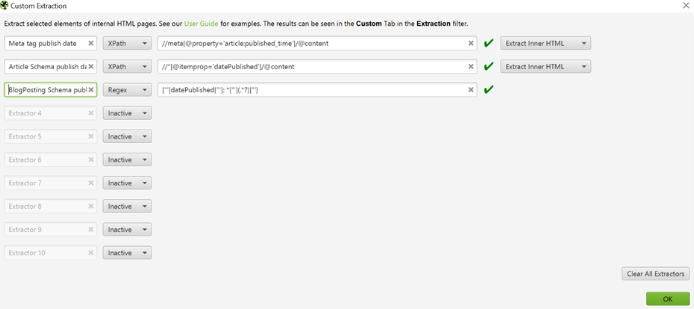
Once you have configured all the extraction parameters, such as Metadata and Article Schema, you can proceed to click on ‘OK’, and generate results. The final data generated using this extraction will help you identify the publishing date for each post in the blog section. You can now narrow down and filter this data to calculate the content velocity for a specific duration.
Manual Method
If you are working on your small business SEO strategy and do not have the budget to invest in tools like SEMrush or Screaming Frog, you can opt for the manual method to calculate content velocity. Fair warning — it is a relatively simple, however, time-consuming process.
This way is traditional but is the most common way to calculate the content velocity of a competitor without expending too many resources.
Step 1: Start by visiting the blog or resources page on your competitors’ websites. You will also want to parallelly create a spreadsheet in which you can record all the data you can scrape from your research.
Step 2: Say you want to calculate the content velocity of a specific competitor within a specific month. You will want to open all the blogs that have been published within that month and enter the details in your spreadsheet.
By details, we mean information such as the published date, the keyword research that went into the content, the word count, the URL of the article, and the title. You can also go a step further and record the author of the article from its byline.
Step 3: Repeat this process for every competitor that you want to analyse. This is a great way to conduct competitor analysis and understand their content distribution and velocity. If done right, you will have a clearer picture of the keywords that your competitors are targeting, the frequency of posting, and the primary resources associated with their content pipeline.
Remember that you can make this spreadsheet as detailed as you want, depending on the information that you deem helpful in creating your content strategy and schedule. Use this information to create a blog calendar for your brand, with consideration to the number of resources you can deploy for content creation and publication.
Ensure Optimal Content Velocity For Your Brand
By now, if you still do not realise the answer to whether content velocity affects your website’s SEO performance, it is a big resounding YES. However, you need to optimise your content velocity based on the resources you can afford, and the goals that you want to achieve with your content.
Having high content velocity with content that is of subpar quality might not generate the desired results but a slightly low content velocity with high-quality content might hit the mark perfectly. If you want to increase your content velocity but lack sufficient resources, we can help you. Contact us to discuss your goals and to figure out the various ways in which we can help empower your business website.
DIGITAL MARKETING FOR ALL OF AUSTRALIA
- SEO AgencyMelbourne
- SEO AgencySydney
- SEO AgencyBrisbane
- SEO AgencyAdelaide
- SEO AgencyPerth
- SEO AgencyCanberra
- SEO AgencyHobart
- SEO AgencyDarwin
- SEO AgencyGold Coast
- We work with all businesses across Australia
